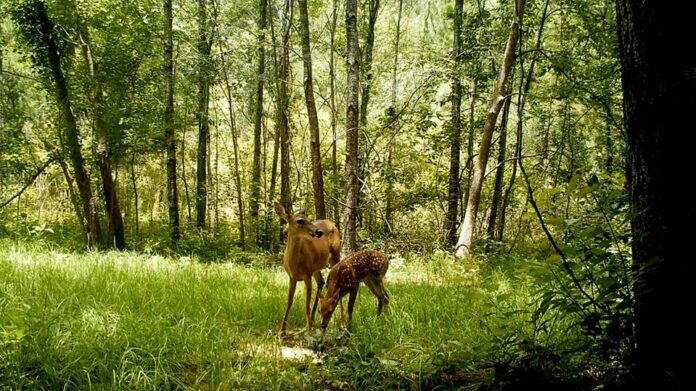After a dozen or so conversations during the last week seeking information on trail-cameras, I thought I’d share a few things I’ve learned about their usage over the last few years. But, before I do, I want to just suggest that a good trail-camera is no replacement for basic woodsmanship. Learning to read sign properly can give you the same information as the camera. The only advantage the camera has been for me, has been to provide photographic evidence of the deer I’m planning to hunt.
Now, a proper trail-camera setup is a very important part of their use and oftentimes the most overlooked. Too many of us expect to throw a camera on a tree and have deer walk past. Though it’s not quite that simple, by taking your time and following these steps, you will generate better photos which will give you a better idea of the bucks on your property and locations to hunt them.
Location
Let’s face it, you will not get pictures of deer if there aren’t any deer around. Just like hunting, you want to pick a location that deer are frequenting at that given time of the year. This could include a water hole now in the heat of the Summer, field entrances to cut hay fields or the upwind side of a timbered ridge where deer will bed down to take advantage of the breeze. The more evidence of deer in the area, the more photos you’ll find on your SD card.
Direction
What goes up must come down. I’m talking about the sun. Make sure your camera is not facing directly into the sunrise or sunset. Many times we forget this simple step and get blurred or whited-out photos from the sun’s glare. It’s best to face trail-cameras north or south, but at least try to avoid facing the shutter due east or west. Also, if placing a camera on a trail, orient it at a 45-degree angle to the trail instead of head on. This will not only give your trail-camera wider viewing and more potential to trigger and catch a deer in the frame as it moves along, but it also keeps the camera out of the deer’s face for less chances to spook it.
Height
Get those cameras up! When setting up a trail-camera, I believe you should always make sure the camera is at least as high as your head. I think deer are much less likely to notice cameras placed six feet or more off the ground. Trail-cameras placed lower can be right in a deer’s face, making it more likely they will notice the camera. Might be just a little picky, but by simply moving your camera up the tree and angling it down, you’ll improve your odds.
Now, some believe it can be more difficult to estimate the age of bucks in photos taken from a high angle because features like belly and neck lines are less visible. When age is important, like with a trail-camera survey this time of the year, keep cameras lower but make some effort to conceal it.
If you’ve figured out a proper set up for your trail-camera, the proof will be in the photos! So, keep these simple steps in mind and see what you get, then adjust your setup as you go to continue improving your success. Good luck!
And as always, if you have any feedback, suggestions or even just want to share a good hunting story, give me a shout at [email protected]. God bless and good hunting!

